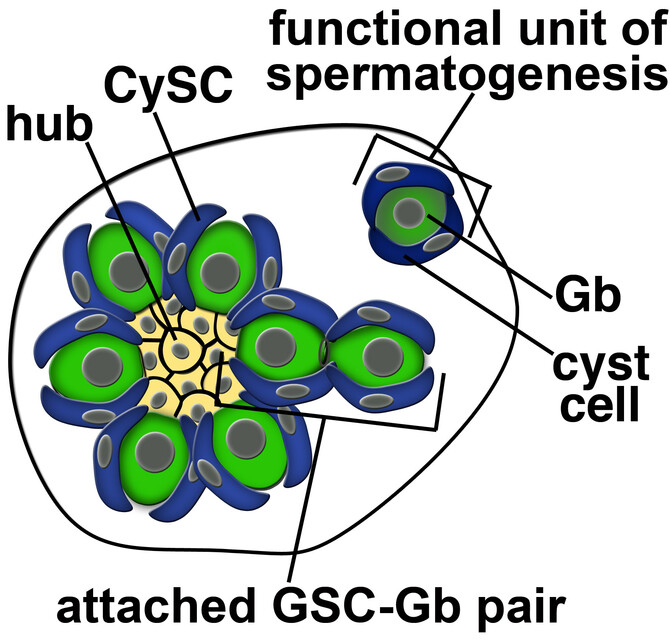Fruitfly Sperm Cells Reveal Intricate Coordination in Stem Cell Replication, Penn Study Finds
Stem cells are key for the continual renewal of tissues in our bodies. As such, manipulating stem cells also holds much promise for biomedicine if their regenerative capacity can be harnessed. However, understanding how stem cells govern normal tissue renewal is a field still in its infancy.
Researchers at the Perelman School of Medicine at the University of Pennsylvania are making headway in this area by studying stem cells in their natural environment in an organism. Stem cell populations reside in areas called niches deep within different types of organs. Scientists think that these niches control stem cell behavior, that is “telling” the stem cell when to produce more stem cells or when to produce daughter cells that will be the workhorses for that tissue or organ. In addition, many niches contain different stem cell types, each necessary to produce the distinct types of cells needed for tissue renewal. But how the production of daughter cells from the different stem cell types is coordinated within a single niche is virtually unknown.
Stephen DiNardo, PhD, a professor of Cell and Developmental Biology and Kari F. Lenhart, PhD, a postdoctoral scientist in the DiNardo lab, study the development of fruit fly sperm as a model to investigate the stem cell-niche. In this case, the niche residing at the tip of the testis is the site of stem cell divisions, which are critical to produce daughter cells that later become sperm.
DiNardo and Lenhart showed that the division of these stem cells is regulated at the final stage of replication, called cytokinesis, right before the two daughter cells separate. What’s more, the timing of that separation is controlled by neighboring stem cells in the niche. This striking finding shows that regulation of cytokinesis is how this niche coordinately produces daughter cells from different stem cell types. The work was published online in advance of the July 27th print publication of Developmental Cell.
Seeing is Discovering
In the fruitfly testis niche, previous studies have shown that different stem cell types had to coordinate with each other. If their respective functions were uncoupled from each other, by mutation for example, the testis could not make sperm. Such coordination is an emerging theme in many tissue niches. For example, in both the blood-cell-producing and the hair-follicle niches, different stem cell types need to coordinate their individual production. But, how does such coordination come about? This is where the well-studied fruitfly testis comes in.
Click here to view the full release.








